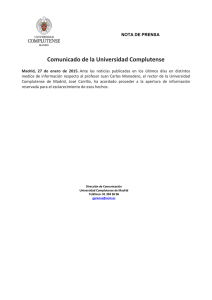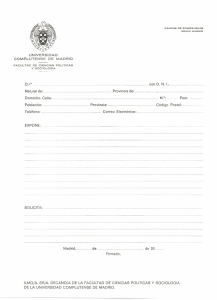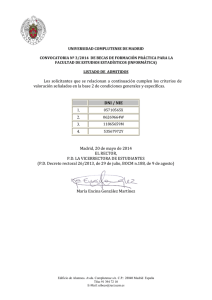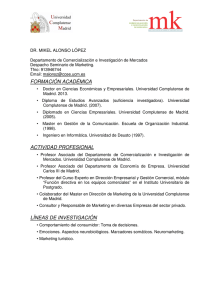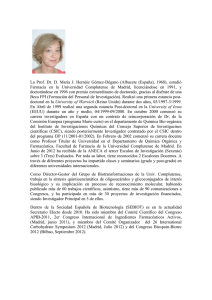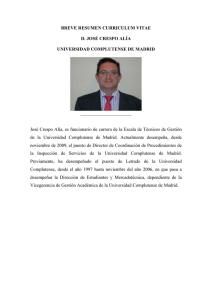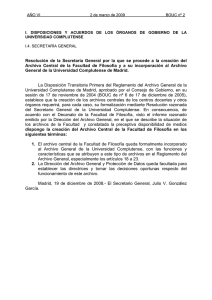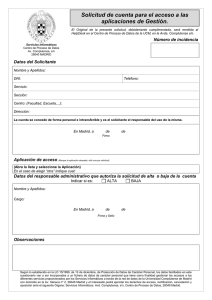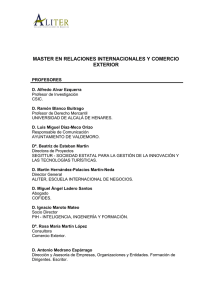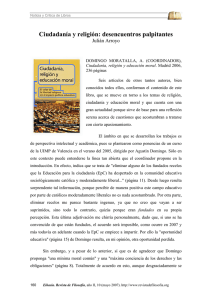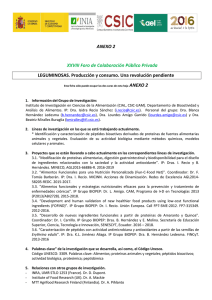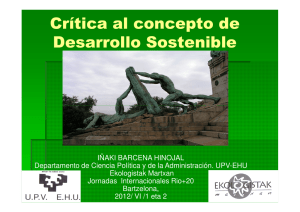La enfermedad sagrada de Laques. The Holy Illness of Laches.
Anuncio
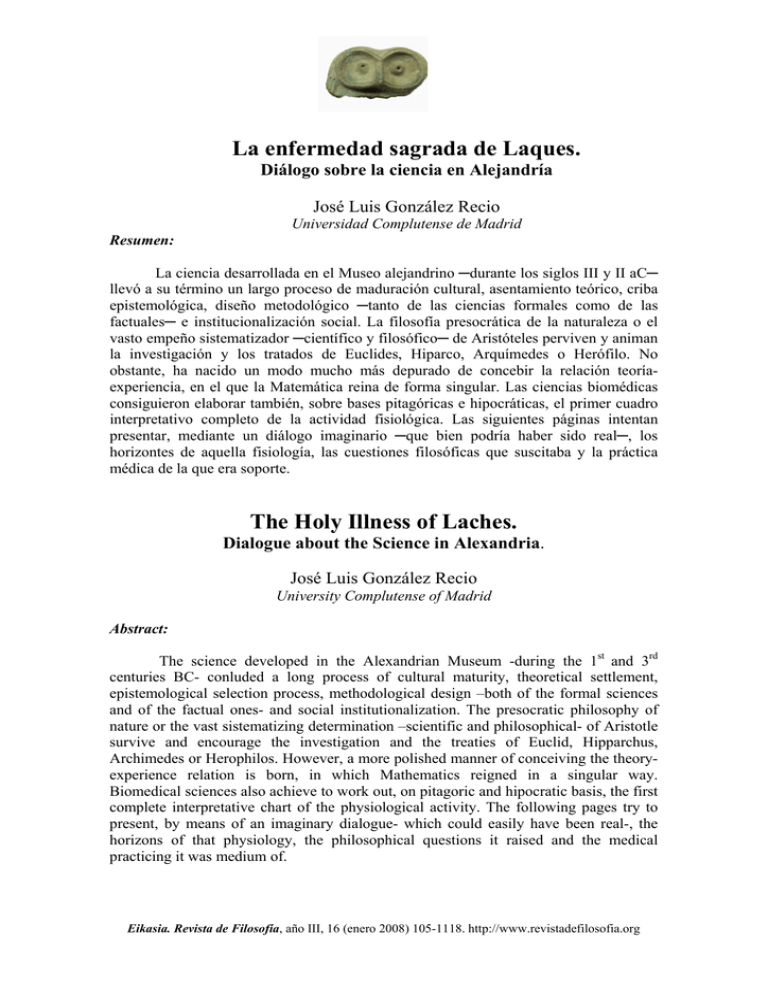
La enfermedad sagrada de Laques. Diálogo sobre la ciencia en Alejandría José Luis González Recio Universidad Complutense de Madrid Resumen: La ciencia desarrollada en el Museo alejandrino ─durante los siglos III y II aC─ llevó a su término un largo proceso de maduración cultural, asentamiento teórico, criba epistemológica, diseño metodológico ─tanto de las ciencias formales como de las factuales─ e institucionalización social. La filosofía presocrática de la naturaleza o el vasto empeño sistematizador ─científico y filosófico─ de Aristóteles perviven y animan la investigación y los tratados de Euclides, Hiparco, Arquímedes o Herófilo. No obstante, ha nacido un modo mucho más depurado de concebir la relación teoríaexperiencia, en el que la Matemática reina de forma singular. Las ciencias biomédicas consiguieron elaborar también, sobre bases pitagóricas e hipocráticas, el primer cuadro interpretativo completo de la actividad fisiológica. Las siguientes páginas intentan presentar, mediante un diálogo imaginario ─que bien podría haber sido real─, los horizontes de aquella fisiología, las cuestiones filosóficas que suscitaba y la práctica médica de la que era soporte. The Holy Illness of Laches. Dialogue about the Science in Alexandria. José Luis González Recio University Complutense of Madrid Abstract: The science developed in the Alexandrian Museum -during the 1st and 3rd centuries BC- conluded a long process of cultural maturity, theoretical settlement, epistemological selection process, methodological design –both of the formal sciences and of the factual ones- and social institutionalization. The presocratic philosophy of nature or the vast sistematizing determination –scientific and philosophical- of Aristotle survive and encourage the investigation and the treaties of Euclid, Hipparchus, Archimedes or Herophilos. However, a more polished manner of conceiving the theoryexperience relation is born, in which Mathematics reigned in a singular way. Biomedical sciences also achieve to work out, on pitagoric and hipocratic basis, the first complete interpretative chart of the physiological activity. The following pages try to present, by means of an imaginary dialogue- which could easily have been real-, the horizons of that physiology, the philosophical questions it raised and the medical practicing it was medium of. Eikasia. Revista de Filosofía, año III, 16 (enero 2008) 105-1118. http://www.revistadefilosofia.org
